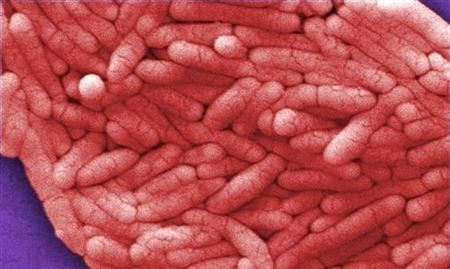Salmonella: Best Ways To Prevent Infection
KEY POINTS
- US records 1.35 million salmonella infections and deaths every year
- CDC updates guidelines on salmonella prevention for the summer season
- Salmonella poisoning symptoms only start to show six hours to six days after infection
Along with the ongoing coronavirus pandemic, other illnesses are on the rise this summer, including salmonella poisoning. This is why the Centers for Disease Control and Prevention (CDC) updated its guidelines on how to best prevent getting infected with the foodborne illness.
Each year, about 1.35 million salmonella infections and 420 deaths are reported in the U.S. The highest number of cases are typically recorded in the summer since the warmer weather provides conducive conditions for salmonella to thrive in food, especially the unrefrigerated perishables, the CDC said.
Salmonella can thrive in various types of food, including chicken, eggs, beef, vegetables, fruits, and even processed foods, when they are not prepared and handled well. Once they are infected with the bacteria, anyone who would consume them could get sick.
According to the CDC, the best way to keep salmonella infection at bay is to always refrigerate or freeze perishables and consume prepared foods as quickly as possible. This way the chances of the foods getting infected with the bacteria are slim.
The public health agency also indicated that one should always wash hands with soap and water before and after preparing meals and handling kitchen utensils. Disinfecting surfaces with a diluted bleach solution is also a good way to ensure that salmonella won’t have a breeding ground in the kitchen.
When organizing the refrigerator, raw meat, seafood, chicken and eggs should be separated from other food items. The refrigerator should always be at 40 degrees Fahrenheit or colder, so salmonella and other bacteria won’t be able to grow.
It is also imperative to use different cutting boards and utensils when handling meat, vegetables and fruits to prevent any cross-contamination. Cooked meals should never be placed on plates that were previously used to hold raw meat, seafood and eggs.
The CDC also advised adhering to the recommended temperatures when cooking different types of meat. For fish, beef, lamb, pork, ham and veal, the recommended temperature is 145 degrees Fahrenheit. For poultry, ground beef, ground pork, ground veal and ground lamb, it’s 160 degrees Fahrenheit. For casseroles, the ideal temperature is 165 degrees Fahrenheit.
When a person accidentally ingests contaminated food, symptoms of salmonella poisoning do not start to show until six hours to six days later. The common symptoms of the condition are nausea, vomiting, abdominal cramps, diarrhea, fever, chills, headache and blood in the stool. The symptoms could last two to seven days, according to MayoClinic.
Since salmonella infection inevitably causes dehydration, treatments focus more on replenishing electrolytes and fluids. Antibiotics may also be administered once the bacteria have entered the bloodstream, but this rarely happens.

© Copyright IBTimes 2024. All rights reserved.





















